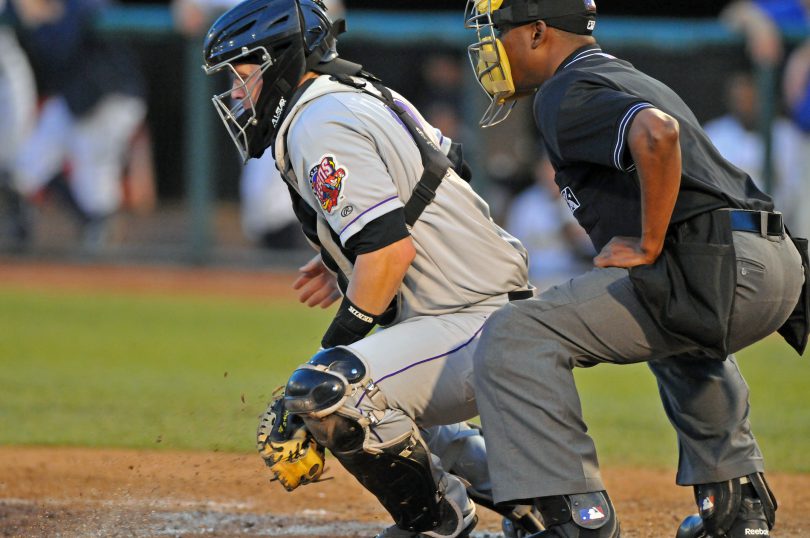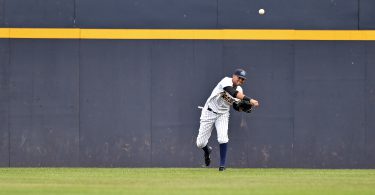The Situation:
There’s a 2-2 count with 2 outs in the bottom of the 9th inning of a 2-1 game. There’s a runner on second and the offense is looking to tie the game up.
The Play:
The pitcher delivers a sharp breaking slider that dives under the swinging bat and into the dirt. The break is so sharp that it also manages to squirt under the catcher’s glove as he gets down to block it. The runner takes off to first, hoping to extend the game and the pitcher points to the ball as the catcher locates and goes after the ball without hesitation.
The Outcome:
The catcher approaches and gets around the ball with his feel aligned to 1st base. He plants and fields it with his bare hand off of his back foot. He takes a small step with his lead foot, opening up his hips and in one motion unleashes a throw to first. The batter and ball arrive at 1st almost simultaneously, but the throw is perfectly placed over the runner’s left shoulder. The ball overtakes the runner in the last step and beat him to the outstretched first baseman by a step. He’s out and the game is over.
What Went Wrong:
You may remember a similar situation in this Think the Game article. In that situation, the catcher and defense made many missteps after the initial mistake of letting the ball go through the 5-hole. This play is the exact opposite. After the initial mistake of letting the ball get through him, the catcher springs into action with the help of the pitcher pointing towards the ball. It’s a fantastic recovery by the catcher, who has almost no time to spare. Take a look at the play for yourself here.
Thinking the game often has to do with preparing for plays well before they happen. We practice taking ground balls, catching fly balls, and blocking pitches in the dirt because we know they will happen in the game. We can also practice recovering from mistakes that are likely to happen, knowing that no one is perfect. Practice imperfect plays where things don’t go exactly according to plan. Practice recovering. Catchers, pitchers and other positions can work on plays like this with difficult throwing angles by setting up a dummy runner in the base bath close to first base. It’s also a great way for first basement to work on moving around the bag at tough angles without the injury risk of being run into. Catchers, go ahead and watch this play again. Can you make this throw? If not, it’s time to think the game and get to work.







